After a collision, failing to follow proven steps can cost you thousands in compensation claims for car accidents. This guide delivers expert advice on filing claims, calculating damages, negotiating effectively, and knowing when to take legal action. You’ll learn how to report the accident, gather evidence, assess economic and non-economic losses, leverage legal strategies, understand insurance rules, organize supporting documentation, and avoid pitfalls that erode your payout. By mastering each phase, from initial reporting to potential litigation, you’ll build a robust claim that secures the full compensation you deserve while positioning yourself for the best possible outcome. If you’ve been injured in a car accident in Massachusetts or New Hampshire, contact our experienced attorneys at Kiley Law Group.

Filing a compensation claim begins with prompt reporting, thorough evidence gathering, and accurate claim initiation to ensure insurers evaluate your case fairly. By calling authorities, documenting every detail, and notifying your insurer correctly, you lay the groundwork for full compensation. For example, photographing vehicle damage and obtaining witness statements immediately can prevent disputes over fault and accelerate your settlement.
Report the accident immediately by calling 911 to create an official police record and secure medical attention.
Prompt scene documentation enhances your credibility and transitions to collecting third-party information.
Promptly reporting a car accident to the authorities and gathering evidence, such as photographs and witness statements, is crucial for building a strong compensation claim. This initial step helps establish the facts of the accident and can prevent disputes over fault, which is essential for a successful claim.
This research supports the importance of immediate action after a car accident, which aligns with the article's advice on reporting and evidence gathering.
Collecting accurate contact, insurance, and vehicle details from all drivers and witnesses strengthens your claim.
These data points prepare you to notify insurers with confidence and move into the claim-valuation phase.
You should notify your insurer within 24 hours to comply with policy terms and preserve coverage.
Timely notification secures your insurer’s cooperation and sets the stage for calculating full damages.
By establishing a clear claim file, you can accurately assess all forms of compensation in the next step.
Calculating your claim’s full value means summing economic and non-economic damages, ensuring no loss goes unclaimed. By itemizing medical bills, lost income, and personal suffering, you present a comprehensive demand. For instance, combining documented hospital invoices with a quantified emotional distress statement yields a more accurate settlement proposal.
Below is a detailed breakdown of damages you can claim, covering financial losses and personal impacts.
| Damage Category | Attribute | Value Definition |
| Economic Damages | Medical Expenses | Cost of treatment, rehabilitation, and future care |
| Economic Damages | Lost Wages | Income lost due to work absence and diminished earning capacity |
| Non-Economic Damages | Pain and Suffering | Physical discomfort and daily activity limitations |
| Non-Economic Damages | Emotional Distress | Psychological trauma, anxiety, and therapy expenses |
Each damage type contributes to your total claim amount and guides negotiation tactics.
Calculating the full value of a car accident compensation claim involves summing both economic and non-economic damages. Economic damages include medical expenses and lost wages, while non-economic damages cover pain, suffering, and emotional distress. A comprehensive approach ensures all losses are considered.
This supports the article's guidance on the types of damages that can be claimed in a car accident compensation case.
Estimating these costs requires collecting billing statements and wage documentation.
Accurate expense calculation forms the quantitative foundation of your settlement demand.
Yes, you can claim non-economic damages for pain, suffering, and emotional distress when injuries cause ongoing discomfort or psychological harm. These losses require a detailed narrative, medical records documenting therapy, and potential expert testimony on the impact of trauma. Demonstrating daily life disruption justifies an uplift in your settlement figures.
By valuing every aspect of your loss, you maximize leverage in strategy development.
Maximizing your settlement relies on strategic legal representation, meticulous documentation, and skilled negotiation tactics. Partnering with experienced advocates and maintaining organized evidence strengthens your negotiating position. For example, presenting a comprehensive injury dossier often compels insurers to increase offers rather than risk litigation.
Engaging a personal injury lawyer elevates your case with professional evaluation, negotiation skill, and courtroom readiness.

Engaging a personal injury lawyer can significantly improve the outcome of a compensation claim. Lawyers provide expert case evaluation, strategic negotiation, and courtroom representation, which can lead to higher settlement offers and protect the claimant's rights throughout the process.
This supports the article's advice on the benefits of hiring a personal injury lawyer to maximize compensation.
Professional legal support enhances your ability to secure maximum compensation and paves the way to consider formal legal action.
Precise, chronological documentation validates every loss and ties expenses directly to the accident.
| Document Type | Attribute | Purpose |
| Medical Records | Treatment Dates | Prove timeline and necessity of care |
| Expense Receipts | Cost Details | Substantiate economic damages |
| Photographs | Scene Evidence | Visual confirmation of injuries and property damage |
| Witness Statements | Observational Facts | Corroborate your version of events |
Organized evidence reduces insurer disputes and transitions you seamlessly into effective negotiation.
Effective negotiation tactics combine firm demands with legal leverage and clear documentation.
Strategic negotiation steers discussions toward fair outcomes and informs whether legal action is required.
Considering a lawsuit becomes necessary when negotiations stall, fault is heavily disputed, or insurer tactics undermine fair valuation. Filing suit enforces deadlines, compels discovery, and leverages court authority to strengthen your position. Taking this step ensures you pursue every avenue to obtain complete compensation.
You should consider litigation if your insurer:
Recognizing these thresholds prevents further compensation erosion.
Litigation compels evidence exchange, depositions, and judicial oversight that often motivates insurers to settle more generously. Through formal discovery, you gain access to internal communications and expert analyses. Court hearings and potential trials create leverage that improves settlement prospects even before a verdict.
Legal claims generally progress over 6 to 18 months and involve court fees, expert witness expenses, and attorney costs. Most personal injury attorneys work on contingency, covering upfront costs and deducting fees only after recovery. Understanding these timelines and fee structures helps you plan for litigation without unexpected financial burdens.
A clear grasp of litigation dynamics leads directly into how insurance policies and fault rules shape your claim’s outcome.
Insurance policy terms and fault determinations dictate your eligibility and the compensation amount you can secure. Insurers analyze liability, coverage limits, and policy exclusions before approving settlements. Grasping comparative fault rules and policy nuances empowers you to challenge underpayments and maximize recovery.
Comparative fault reduces your recovery in proportion to your share of negligence. If you bear 20% fault, your compensation is diminished by 20%. Demonstrating minimal or no fault through clear evidence mitigates this reduction and enhances your final award.
Liability, uninsured/underinsured motorist, and medical payments coverages each play distinct roles in your claim.
Leveraging every applicable policy increases your total available compensation.
Insurance companies often employ delay tactics, lowball offers, and excessive information requests to minimize liability.
| Tactic | Attribute | Purpose |
| Delay Tactics | Claim Processing Time | Pressure you into settling quickly |
| Lowball Offers | Settlement Amount | Reduce insurer’s financial exposure |
| Information Overload | Documentation Burden | Exhaust claimants and force premature closure |
Identifying and countering these tactics strengthens your negotiation and legal options.
Building a strong case requires meticulous documentation, which we explore next.
Comprehensive documentation offers a factual backbone that proves liability and quantifies damages. From medical records to expert analyses, every document plays a role in substantiating your demand. Effective organization of these materials ensures you can present a compelling, coherent case.
Organize all medical documentation chronologically, grouping treatment notes, invoices, and insurance explanations together.
A structured medical dossier reinforces the necessity and cost of your treatment plan.
Police reports and scene photographs establish unbiased evidence of fault and vehicle damage.
These materials anchor your liability arguments and guide accurate valuation of property losses.
Witness statements and expert analyses add authoritative support to your liability and damage claims.
| Evidence Type | Attribute | Benefit |
| Witness Statement | Independent Testimony | Corroborates your account of events |
| Expert Opinion | Professional Analysis | Validates medical diagnoses and causation |
| Accident Reconstruction | Technical Report | Clarifies impact dynamics and fault determination |
Expert insights and third-party observations deepen the credibility of your claim and prepare you for negotiation or trial.
Avoiding procedural and communication errors preserves the full value of your claim. Skipping prompt reporting, providing unsupervised statements, or missing documentation deadlines can substantially reduce your settlement. Awareness of these pitfalls empowers you to maintain a strong claim trajectory.
The most common mistakes include delayed reporting, incomplete evidence, and under-documented injuries.
Recognizing these errors early prevents avoidable compensation reductions.
Delays in reporting an accident or injury cast doubt on the link between the crash and your damages. Insurance adjusters may argue that intervening events caused your condition. Prompt reporting preserves the causal relationship and strengthens your entitlement to full compensation.
Recorded statements without attorney guidance can lock you into unfavorable narratives that insurers exploit. Early legal consultation ensures your statements remain factual and avoid inadvertent admissions of fault. Protecting your rights through counsel preserves your negotiation leverage.
Concluding these steps equips you to secure the maximum compensation possible after a car accident.
After applying these guidelines, you’ll be positioned to recover fair compensation and restore financial stability. Every detail, from initial reporting to strategic negotiation, contributes to a stronger claim. By avoiding common traps and engaging professional support, you reinforce your entitlement. Trust these proven methods to guide you toward a successful resolution and consult experienced advocates for personalized assistance.
A: Immediately after a car accident, prioritize safety and health. Call 911 to report the incident and seek medical attention, if needed. Ensure that you document the scene by taking photographs and gathering witness information. This initial response is crucial for establishing a clear account of the accident, which will support your compensation claim later. Additionally, avoid discussing fault at the scene, as this can complicate your claim process.
A: The time frame to file a compensation claim after a car accident varies by state due to differing statutes of limitations. Generally, you have between one to three years from the date of the accident to file a claim. However, it’s advisable to initiate the process as soon as possible to ensure you gather all necessary evidence and documentation while details are fresh. Delaying could jeopardize your ability to recover compensation.
A: If the other driver is uninsured or underinsured, you may still have options for compensation. Check if you have uninsured/underinsured motorist coverage on your own policy, which can help cover your damages. Additionally, you may pursue a claim against your own insurance company or consider filing a lawsuit against the at-fault driver if they have assets. Consulting with a personal injury lawyer can provide guidance on the best course of action in these situations.
A: Preparing for negotiations with the insurance company involves gathering all relevant documentation, including medical records, repair estimates, and evidence of lost wages. Create a comprehensive demand letter that outlines your damages and justifies your compensation request. Familiarize yourself with similar case settlements to strengthen your position. Practicing your negotiation points and remaining calm and assertive during discussions can also enhance your chances of achieving a favorable outcome.
A: Filing a lawsuit can involve various costs, including court filing fees, attorney fees, and expenses for expert witnesses or accident reconstruction specialists. Many personal injury lawyers work on a contingency fee basis, meaning they only get paid if you win your case. However, you may still be responsible for certain costs upfront, such as court fees. Understanding these potential expenses can help you budget and prepare for the litigation process.
A: Yes, you can still claim compensation even if you were partially at fault for the accident. Most states follow a comparative fault system, which allows you to recover damages proportional to your level of fault. For example, if you are found to be 20% at fault, your compensation will be reduced by that percentage. It’s essential to gather evidence that supports your case and minimizes your perceived liability to maximize your recovery.
A: A personal injury lawyer plays a crucial role in navigating the complexities of your compensation claim. They provide expert legal advice, help gather and organize evidence, and negotiate with insurance companies on your behalf. Their experience in similar cases allows them to assess the full value of your claim and advocate for your best interests. Additionally, if litigation becomes necessary, a lawyer will represent you in court, ensuring your rights are protected throughout the process.
By following these essential steps, you can significantly enhance your chances of securing maximum compensation after a car accident. Each phase, from prompt reporting to strategic negotiation, plays a crucial role in building a robust claim that reflects your true losses. To further empower your recovery journey, consider consulting with experienced legal professionals who can provide tailored guidance. Take the first step towards financial stability by exploring our resources and connecting with experts today.
The attorneys at Kiley Law Group have been helping injured victims in Massachusetts and New Hampshire get the compensation they deserve for over 50 years. If you’ve been injured in an accident, contact us today to get back on your feet.

